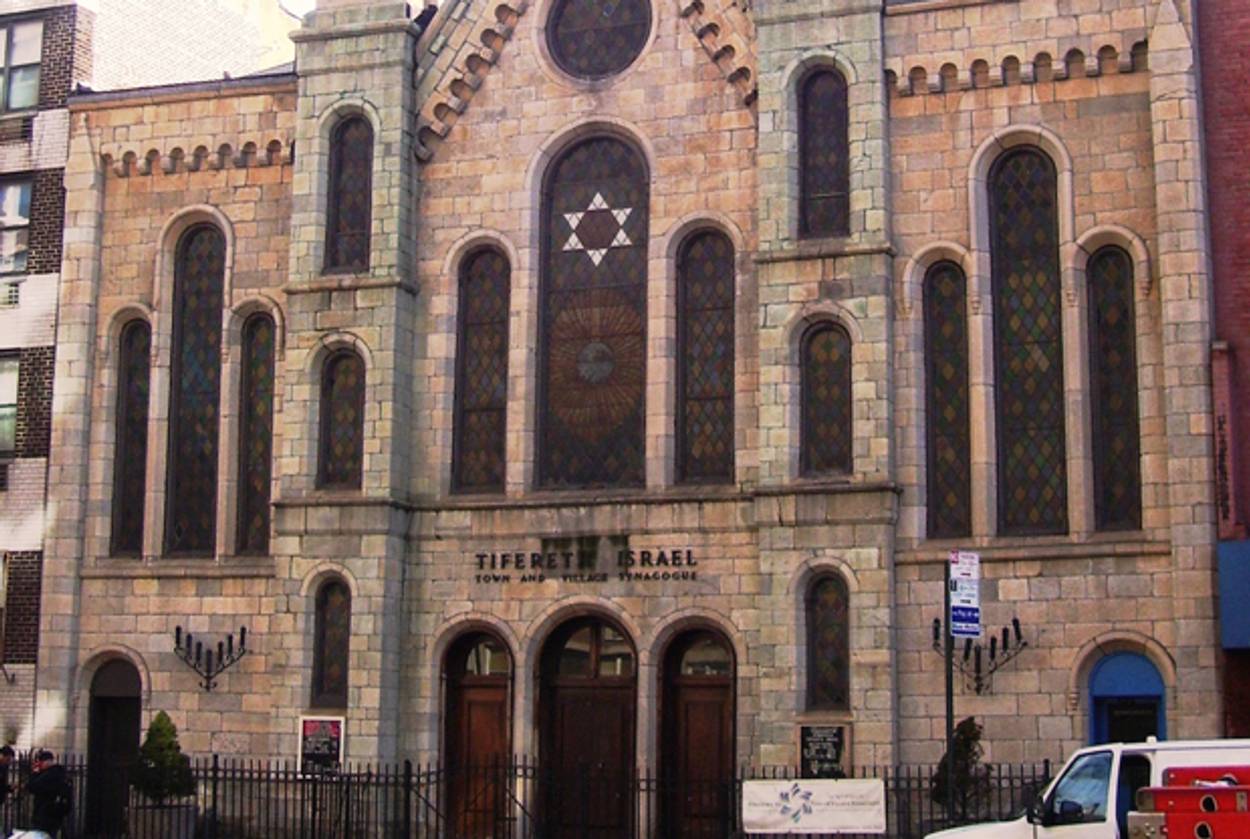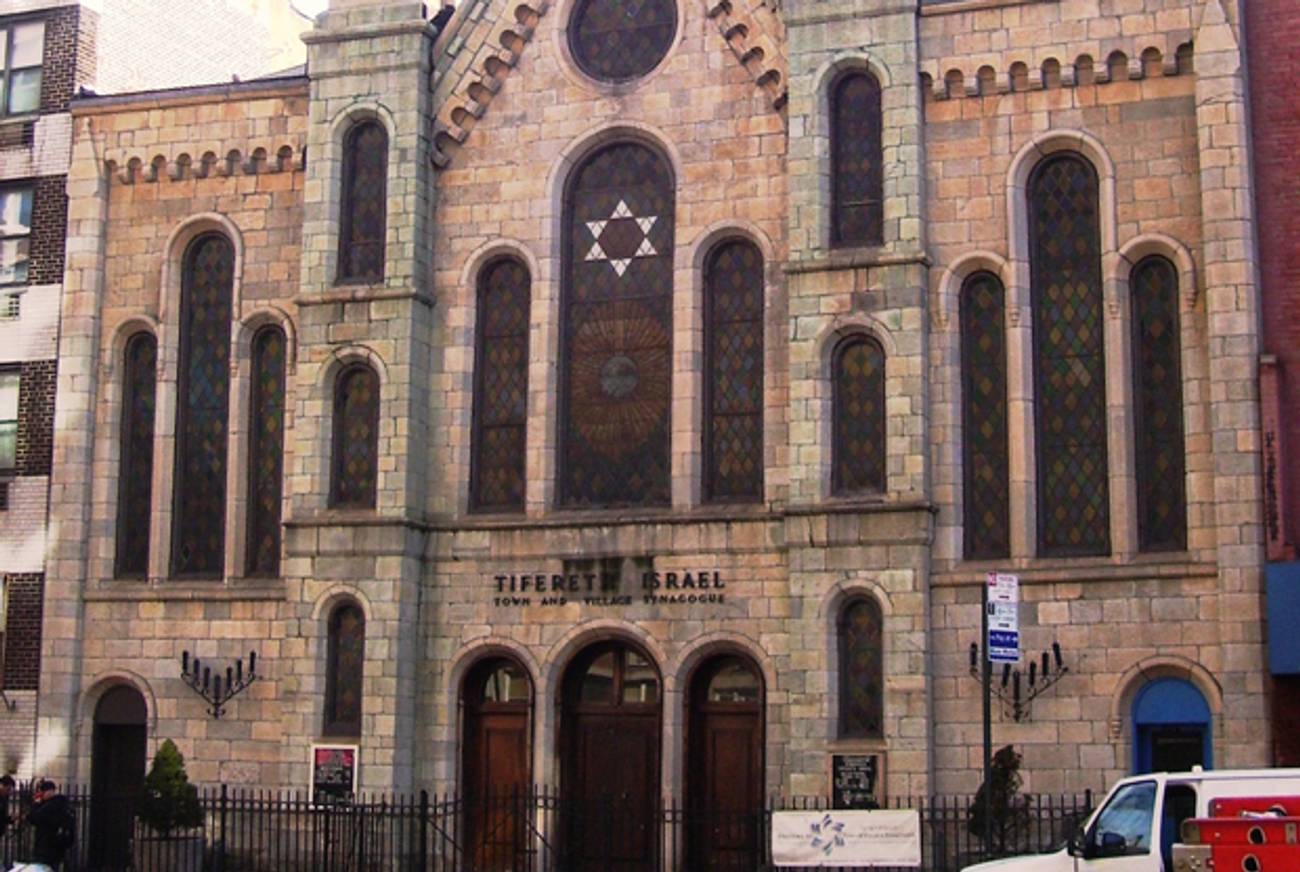Historic East Village Synagogue Landmarked
But NYC congregants who opposed designation worry about added red tape




The building that houses Tifereth Israel Town & Village Synagogue was designated as a landmark Tuesday by the New York City Landmarks Preservation Commission. (A small structure in the back of the building was excluded from the ruling.) But not everyone is excited about the news. According to Town & Village president Marianna Mott Newirth, the Conservative synagogue “opposed designation.”
The Greenwich Village Society for Historic Preservation, known by the acronym GVHSP, was the main force behind the push to secure landmark status for the building, which was built in 1866 as the First German Baptist Church and became the Ukrainian Autocephalic Church of St. Volodymyr in 1926. The building was sold to the Town & Village Synagogue in 1962, and has undergone a number of cosmetic changes in the last 150 years: The original church spires were replaced at some point, and the synagogue swapped the images depicted on the stained glass windows.
“We were thrilled,” GVHSP director Andrew Berman said about the building’s landmark designation.
The commission first considered the building when the New York City landmark law went into effect in 1965, but never took a vote, nor did it remove the issue from its calendar. This left the official status of the building in limbo for nearly 50 years, although the synagogue regularly consulted with the Landmarks Preservation Committee.
A congregation of about 400 families, the synagogue describes itself as “a traditional, egalitarian, Conservative community committed to Jewish life, innovative learning, prayer and social justice.” Though the building has undergone modifications in recent years, Newirth insisted all the renovations were approved. “We were behaving like a landmark,” she said.
Last year though, Newirth explained, synagogue leadership “took a hard look about what we would do with the building.” The building was put on the market in October 2013. GVSHP, worried that the building could be sold or permanently altered, took up the effort for a new hearing and a final ruling.
The synagogue took the building off the market after a few months. “We never wanted to build an apartment complex or anything like that,” Newirth said. “We are staying home, we are not selling our building.”
One of the congregation’s concerns is that the new status will add restrictions that raise the cost of making necessary modifications to the structure. “We were hoping to put in an elevator for our older congregants,” said Newirth. “Now there is more red tape to cut through.”
Jaqueline Berkowitz, vice-chair of the board, told the East Villager News in March that landmark status could also affect plans to provide a daycare center, access for the disabled to the building, and increased LGBTQ services.
But Berman insisted the new status will not prevent the community from remaining flexible to the needs of its members. “This will only prevent construction to the outside of the building,” he said. Changes to the room sizes and layout of the inside are still allowed. The landmark designation also includes a “hardship provision,” which can absolve Town & Village of requirements if the landmark status prevents the synagogue from fulfilling its religious mission.
Currently, scaffolding is up around the synagogue as repair work to fix water damage is completed. The glass windows on the outside may need to be replaced as well in the future. “That will be expensive if we have to replace every pane exactly as is,” Newirth said. “There will be a lot more negotiation now.”
Previous: Historic Washington Heights Synagogue Fights Foreclosure
Related: Rabbi Threatens Landmarked Shul
The Tenth Man
Zack Schrieber is an intern at Tablet Magazine. Follow him on Twitter @zschrieber.